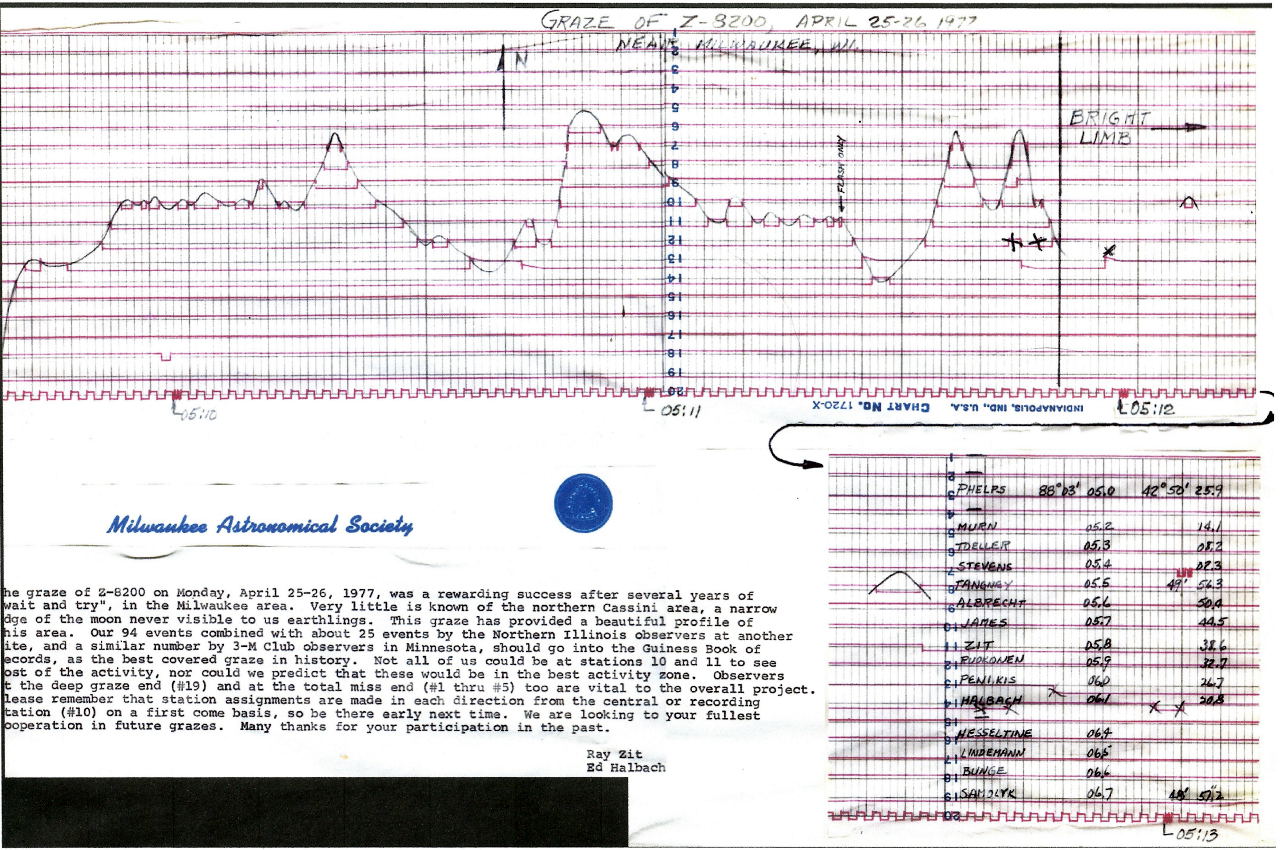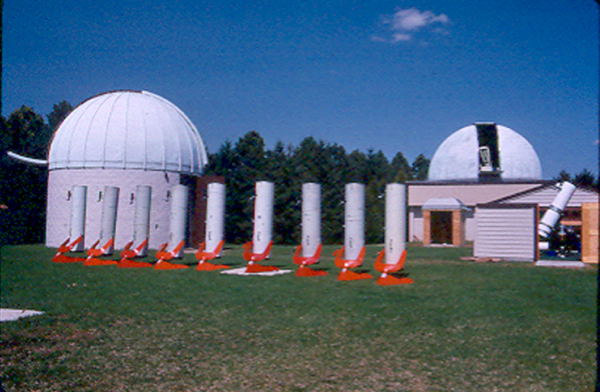Portable Scopes
Long before the Dobsonian telescope revolution, the Milwaukee Astronomical Society built scopes which were incredibly portable.
The club was involved in a lunar grazing observation program. The idea was straightforward: observers were stationed along a North/South line at tenth of mile intervals.
When a graze was predicted, up to 20 observers would participate, pushing and holding a button when they saw the star disappear and releasing it when it would reappear.
This all being recorded on a chart recorder. When it was successful, the graph would show the contour of the moon in that region. Here is a particularly successful
graze in 1977.

But the program had great difficulty getting successful results. After a disappointing graze attempt by 6 observers because of inadequate equipment, Ed Halbach (MAS Observatory Director for 35 years) proposed the club build a number of "easily portable" 8-inch or larger reflectors for the grazes and general use, especially at the Open House nights.
They settled on a 10-inch, f/5.6, fork mounted Newtonian telescope. The club would produce 12 of these telescopes. We called them the Portascopes.

